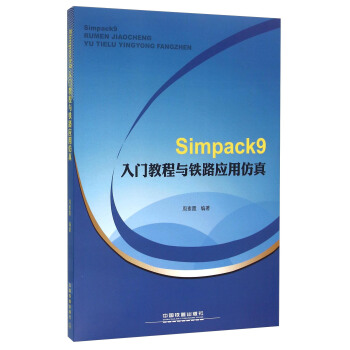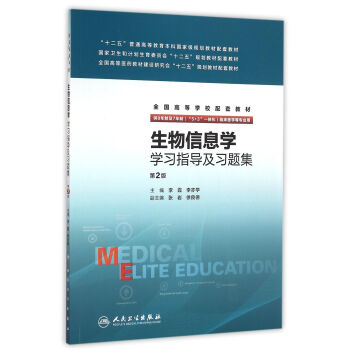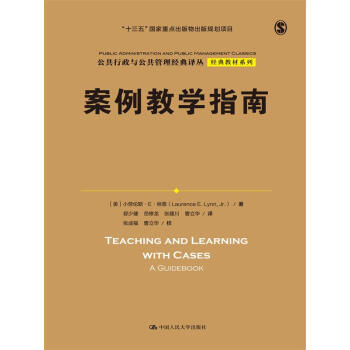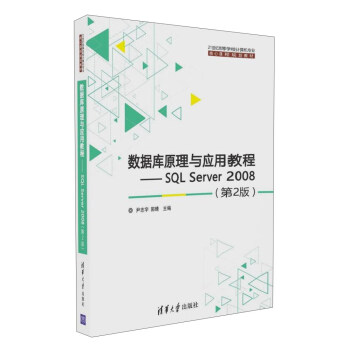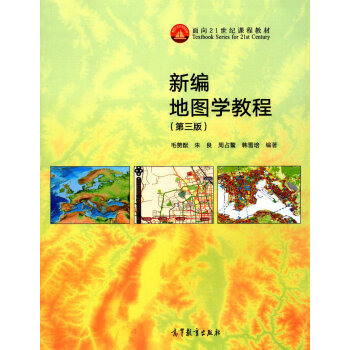

具体描述
内容简介
本教材针对中国学生以英语作为交流工具参加国际学术活动的各个环节而设计:包括两大部分:“会前学术活动”和“会议期间学术活动”,前者包括:会议通知、论文政绩、论文摘要和全文提交、会议邀请函及回复等;后者包括:发言开头、发言提纲和过渡、研究方法、研究结果及讨论、结论等。每个单元的布局包括:学习目标,样例示范及练习,主要用法及句型,模拟练习等。作者简介
王慧莉,大连理工大学研究生部主任,外国语学院院长助理, 认知神经心理语言学研究所所长,外语学院学位评定委员会成员,全国大学英语口语考官, 全国认知语言学学会会员。主编教材包括《研究生公共英语教程》、《新编实用英语》、《化工英语》、《新世纪研究生公共英语教材阅读A修订版》等。 曹晓玮,中国人民大学外语学院副教授,研究生英语教研室副主任。考研辅导名师。编写过多部教材和考试类图书。主讲人大博士生英语课程多年,有丰富的教学经验。目录
PartⅠ Structure of an Academic PresentationChapter 1 Introduction
Chapter 2 Literature Review
Chapter 3 Methodology
Chapter 4 Results and Discussion
Chapter 5 Conclusion
Chapter 6 Questions and Answers
Part Ⅱ Oral Presentation Skills
Chapter 7 Visual Aids
Chapter 8 Logical Development, Signposts and Transitions
Chapter 9 Audience’s Attention
Chapter 10 Pronunciation and Intonation
Part Ⅲ Other Forms of Conference Communication
Chapter 12 Conference Correspondence (for the participants)
Chapter 13 Designing Conference Posters
Chapter 14 Chairing an International Conference
Appendix 1 Key
Appendix 2 Scripts
精彩书摘
精彩片段:Part Ⅰ Structure of an Academic Presentation
Overview: Generally speaking, there are three fundamental parts in a presentation: the Introduction, the Main Body and the Conclusion. The Main Body is the biggest part. The Introduction and Conclusion are relatively short. The Introduction should tell the audience what you are going to talk about. The Main Body should develop those themes or points in more detail in the order that you have introduced them in your Introduction. In the Conclusion you should pick out the main points from the Main Body and summarize them for your audience. So the Conclusion is similar to the Introduction in fact.
Chapter 1 Introduction
Task Objectives
You will learn
what should be included in the Introduction of an academic presentation.
how to begin your academic presentation.
to recognize and understand the typical expressions used in academic
presentations.
to use the appropriate expressions.
Task Preparation
Sample demonstration
Ⅰ. Listen to the following six passages of introductions in an oral presentation and then match the numbers of the passage on the left column with the topics (A-F) on the right column.
Number of the passage Topics of the passages
Passage 1 A. Analysis of a bunch of brains of psychopathic killers
Passage 2 B. An emerging technology called additive
manufacturing, or 3D
Passage 3 C. The link between the structure of the language you
speak and how you find yourself with the propensity
to save
Passage 4 D. What translates generic public space into
qualitative space?
Passage 5 E. More data allows us to see new, better and different
Passage 6 F. Changes in power transition and diffusion in this
21st century
前言/序言
用户评价
这本书的书名“国际学术会议英语”瞬间吸引了我。对于我这样一位长期活跃在学术前沿的研究者来说,在国际学术会议上进行有效沟通,已经成为一项必不可少的核心能力。虽然我能够阅读大量的英文文献,并且在论文写作上也有一定的基础,但每次准备会议报告时,我总会感到语言表达上的不足,尤其是如何用最精准、最地道的学术英语来阐述我的研究,如何在短时间内吸引听众的注意力,如何在 Q&A 环节游刃有余地应对各种提问,这些都是我一直以来努力提升的方向。这本书提出的“任务驱动型”学习模式,让我看到了突破的契机。我理解这不仅仅是简单的语言练习,而是通过一系列与学术会议紧密相关的实际任务,来培养我的综合能力。我期待这本书能够提供详实的指导,比如如何撰写一份能够吸引人眼球的会议摘要,如何设计一份信息丰富且具有视觉冲击力的学术海报,如何进行一场逻辑清晰、表达流畅的口头报告,以及如何应对各种突发情况。这本书对我来说,不仅仅是一本教材,更是一个提升自我、拓展学术视野的绝佳机会。
评分我是一名在读博士生,常常需要参加国际学术会议来展示我的研究成果,并与同行进行交流。虽然我的专业能力毋庸置疑,但每次面对用英语进行口头报告时,我总是会感到一种莫名的压力。我能看懂英文论文,也能写出一些简单的英文句子,但要在会议上进行流畅、有逻辑、且富有说服力的演讲,对我来说依然是一个巨大的挑战。我曾多次尝试过阅读英文演讲技巧的书籍,也参加过一些线下的口语培训,但总觉得不够系统,而且缺乏针对学术会议这一特定场景的训练。这本书的出现,给我带来了新的希望。它明确地将“国际学术会议英语”作为学习对象,并且强调了“任务驱动型”的学习方式。这让我觉得,这本书会更加注重实用性和操作性,通过一系列模拟会议场景的任务,来引导我逐步掌握所需的语言技能。我非常期待这本书能够提供丰富的案例分析,让我能够学习到如何有效地组织演讲内容,如何使用恰当的学术词汇和句型,如何制作一份精美的幻灯片,以及如何在 Q&A 环节自信地回答问题。我希望这本书能够帮助我克服语言障碍,让我能够更加自信地走向国际学术舞台,与世界分享我的研究成果。
评分作为一名有着多年教学经验的英语教师,我一直致力于为学生提供最优质的学习资源。在接触到“国际学术会议英语(任务驱动型研究生公共英语系列教材)”这本书时,我被其鲜明的定位和创新的教学理念所吸引。我深知,在当前全球化日益加深的学术环境下,研究生们不仅需要掌握扎实的专业知识,更需要具备流利的学术英语沟通能力,尤其是在国际学术会议上进行交流和展示。而传统的英语教学模式,往往难以满足这种高度专业化和场景化的需求。这本书所倡导的“任务驱动型”学习模式,恰恰能够弥补这一不足。通过将学习内容与真实的学术会议任务相结合,学生们能够在完成实际操作的过程中,习得所需的语言技能,从而达到学以致用的目的。我非常期待这本书能够提供一套系统性的学习方案,涵盖从会议的各个环节(如摘要撰写、海报展示、口头报告、问答环节等)所需的语言知识和技巧。同时,我也希望这本书能够提供丰富的案例分析和练习材料,帮助研究生们更好地理解和掌握国际学术会议的沟通规则和文化。我相信,这本书的出版,将为我国研究生英语教学提供一个全新的范式,并有力地推动学术交流的发展。
评分作为一名正在进行博士后研究的研究者,我深切体会到在国际学术舞台上,语言能力的重要性已经超越了单纯的知识储备。我经常需要阅读大量的英文文献,但更令人头疼的是,如何将自己多年的研究成果,用同样水准的英语,以一种令人信服的方式,呈现在国际学术会议上。我参加过不少国际会议,也见过许多英语流利的同行,他们的报告条理清晰、逻辑严谨,能够准确地捕捉听众的注意力,并且在问答环节能够以攻为守,展现出深厚的学术功底。反观自己,虽然内心有千言万语,但到了嘴边却常常词不达意,甚至因为紧张而出现语病。我对于这本书的期望很高,因为它明确地打出了“国际学术会议英语”的旗号,并且强调了“任务驱动型”的学习模式。我理解这可能意味着教材不是简单地罗列语法规则和词汇,而是通过设计一系列与学术会议场景紧密相关的实践任务,让学习者在完成任务的过程中,自然而然地掌握所需的语言技能。我期待这本书能够提供详实的指导,比如如何撰写一份引人注目的会议摘要,如何制作一份信息量大且视觉效果好的学术海报,如何进行一场精彩绝伦的口头报告,以及如何在 Q&A 环节巧妙地应对挑战。我希望这本书能帮助我打破语言的壁垒,让我能够更加自信地与全球顶尖学者交流,分享我的研究成果,并从中获得宝贵的反馈和启发。
评分这本书的封面设计就透露着一股浓浓的学术范儿,简洁的配色和清晰的字体,一看就知道是为高端学术群体量身定做的。书名“国际学术会议英语”一下子就抓住了核心,对于我这种常年活跃在学术前沿,或者即将踏上这条道路的学生来说,简直是雪中送炭。我一直觉得,发表高水平论文固然重要,但更关键的是,如何将自己的研究成果有效地、准确地、并且有说服力地在国际学术会议上展示出来。这不仅仅是语言的翻译,更是一种跨文化的沟通艺术,一种思维方式的转换。过去,我常常在准备英文报告时感到力不从心,虽然我的专业知识过硬,但如何用精准的学术英语来表达,如何在短短的十几分钟内抓住听众的耳朵,如何在 Q&A 环节游刃有余地应对各种提问,这些都是我长期以来难以攻克的难题。我尝试过阅读大量的英文学术文献,学习其中的表达方式,也参加过一些线下的英语培训课程,但总觉得缺乏系统性和针对性,尤其是针对“会议”这一特定场景下的英语运用,很多教材都显得泛泛而谈,无法触及到问题的核心。这本书的出现,让我看到了希望。我期待它能够提供一套系统性的、任务驱动的学习方法,帮助我从宏观的会议流程、微观的句型表达,到具体的幻灯片制作、口头陈述技巧,再到临场应变策略,全方位地提升我的学术会议英语能力。我希望这本书能成为我学术旅途中的一位得力助手,让我能够自信地走上国际舞台,与全球顶尖的学者进行思想的碰撞与交流。
评分这本书的书名“国际学术会议英语”立刻吸引了我的注意。对于我来说,这不仅仅是一本教材,更是一种提升学术竞争力的工具。我一直认为,能够用流利的、地道的学术英语在国际会议上展示自己的研究成果,是衡量一个学者学术水平的重要标准之一。我曾多次参加过国内外的学术会议,每次都会被那些能够自如运用英语进行演讲、并且能够巧妙回应提问的同行所折服。回想起自己曾经在国际会议上因为语言不畅而错失交流机会的遗憾,我就下定决心要加强这方面的训练。我特别关注教材中“任务驱动型”的理念,这在我看来是一种非常高效的学习方式。我希望这本书能够通过设置一系列真实的学术会议场景下的任务,比如撰写会议摘要、准备口头报告、设计会议海报、甚至模拟会议问答环节等等,来引导我逐步掌握所需的语言技能。我期待教材能够提供丰富的语料库和实用的表达范式,让我能够学习到如何准确、清晰、并且有说服力地陈述我的研究观点。此外,我也希望这本书能够帮助我了解不同文化背景下的学术交流习惯,以及如何有效地与来自世界各地的学者进行沟通。这本书的出现,让我看到了克服语言障碍、走向国际学术舞台的希望。
评分我是一名即将攻读硕士学位,并计划未来深造的准研究生。在准备考研的过程中,我通过大量的文献阅读,逐渐意识到英语在学术研究中的重要性,尤其是在国际学术交流方面。我曾有幸参加过一次国际学术会议的旁听,虽然听不太懂全部内容,但那些用流利的英语进行演讲、清晰阐述研究过程和结果的学者们,给我留下了深刻的印象。我意识到,要想在未来的学术道路上走得更远,就必须掌握扎实的学术英语能力,尤其是针对国际学术会议的专门用语和表达方式。这本书的书名“国际学术会议英语”正中我的下怀,而“任务驱动型”的学习模式更是让我眼前一亮。我理解这可能意味着学习过程将更加侧重于实践和应用,通过完成一系列模拟真实会议场景的任务,来逐步提升我的英语听说读写能力。我期待这本书能够提供一套系统性的学习方法,从最基础的会议术语和表达,到如何构建一篇完整的会议报告,再到如何进行有效的口头陈述和问答,都能有详尽的指导。我希望这本书能成为我开启学术生涯的敲门砖,帮助我自信地迈出国门,与世界分享我的学术成果。
评分这本书的出版,对于广大研究生群体来说,无疑是一个重大的福音。我一直深耕于某个特定的研究领域,也积累了不少研究成果,但每次面临撰写英文论文、准备国际会议报告时,总会感到一种无形的压力。语言的障碍,尤其是学术会议上那种严谨、专业、且充满逻辑性的英语表达,是我一直以来需要克服的难关。我曾有过在国际会议上因为语言表达不够清晰、逻辑不够流畅而被误解的经历,那时的心情真是沮丧到了极点。这次偶然看到了这本书的书名,立刻引起了我极大的兴趣。它明确地将“国际学术会议”作为学习的定位,这正是许多同类教材所缺乏的。我特别看重“任务驱动型”这个概念,这意味着学习过程不再是枯燥的单词和语法记忆,而是围绕着具体的学术会议场景,通过完成一系列实际的任务来逐步掌握所需的语言技能。我设想,这本书可能会包含从会议邀请函的解读、摘要的撰写、海报的设计制作、口头报告的准备与演练,到圆桌讨论的参与技巧等一系列实用环节。我期待它能提供丰富的案例分析,深入剖析不同类型的学术会议、不同环节的英语表达要点,并提供大量地道的、符合学术规范的句型和词汇。更重要的是,我希望它能教会我如何清晰地组织思路,如何用富有逻辑性的语言来呈现我的研究,如何与不同文化背景的学者进行有效的沟通,甚至是如何在辩论中保持冷静与自信。
评分这本书的名称,尤其是“国际学术会议英语”这几个字,直接击中了我内心深处的痛点。作为一名常年与学术文献打交道的科研工作者,我深知语言是连接知识与传播的桥梁。我能够阅读和理解大量的英文学术文献,但当我需要将自己的研究成果,用同样精准、专业的英语,在国际会议的舞台上清晰地呈现出来时,我常常感到力不从心。那种紧张感,那种脑海中词汇的匮乏,那种逻辑表达上的卡顿,是我多年来一直想要克服的障碍。我曾尝试过各种方法,但总感觉缺乏系统性和针对性。这本书提出的“任务驱动型”学习模式,让我看到了新的希望。我理解这可能意味着学习将不再是枯燥的语法和词汇操练,而是围绕着具体的学术会议场景,通过完成一系列实际的任务来逐步掌握所需的语言技能。我期待这本书能够提供详实的案例分析,比如如何撰写一份能够吸引评委的会议摘要,如何制作一份信息量大、逻辑清晰的学术海报,如何进行一场既有深度又有广度的口头陈述,以及如何在 Q&A 环节巧妙地应对各种挑战。我希望这本书能够成为我的一本“秘书”,在我准备会议时,为我提供最专业的指导和最实用的工具。
评分我是一个对学术研究充满热情,并且立志在国际学术界留下自己足迹的学生。在接触了大量的学术论文和国际会议的信息后,我深刻体会到,单有好的研究想法和扎实的专业知识是远远不够的,我们还需要具备良好的学术英语沟通能力,尤其是能够在国际学术会议上自如地展示自己的研究成果。这本书的名称——“国际学术会议英语”——以及“任务驱动型”的学习模式,瞬间吸引了我。我一直认为,学习语言最有效的方式就是将其置于真实的语境中,通过完成一系列与学习目标相关的任务来巩固和提升。我非常期待这本书能够提供一套完整的学习体系,从会议邀请函的解读,到论文摘要的撰写,从学术海报的设计,到口头报告的准备与演练,再到问答环节的应对策略,都能有细致入微的指导。我希望这本书能够帮助我掌握最地道的学术英语表达,理解不同国家学者在交流中的文化差异,并且能够自信地在国际舞台上与同行进行思想的交流与碰撞。这本书不仅仅是一本教材,更是一种能力的培养,一种视野的拓展。
评分不错,快递很好..........
评分正版,好~
评分质量很好,送货速度也很快。
评分挺好的
评分挺好的
评分给力
评分不错
评分好
评分有光盘 学习一下
相关图书
本站所有内容均为互联网搜索引擎提供的公开搜索信息,本站不存储任何数据与内容,任何内容与数据均与本站无关,如有需要请联系相关搜索引擎包括但不限于百度,google,bing,sogou 等,本站所有链接都为正版商品购买链接。
© 2025 windowsfront.com All Rights Reserved. 静流书站 版权所有

![烹饪学基本原理 [Basic Principles of Culinary Science] pdf epub mobi 电子书 下载](https://pic.windowsfront.com/11862101/56b31862Nc5fef881.jpg)



